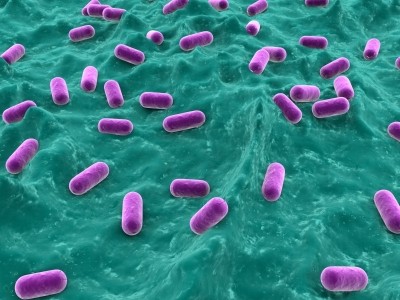Prebiotic-enriched formula may protect healthy infants from allergy: Danone
Infants fed formula fortified with pectin-derived acidic oligosaccharides (pAOS), short chain oligosaccharides (scGOS) and long chain fructo-oligosaccharides (lcFOS) was associated with a significant reduction in the incidence of atopic dermatitis in children classified as being at low-risk, according to findings published in the Journal of Allergy and Clinical Immunology.
“A novelty of our study is the low atopy risk strata as the target population,” wrote the researchers, led by Christoph Gruber, from the Department of Pediatrics at Klinikum Frankfurt GmbH. “Primary prevention in infants at low AD risk is crucial because on a population level, most children who develop AD come from families without a positive family history.
“Given the high prevalence of AD in many industrialized countries, it would be most interesting to learn whether the preventive effect of a specific mixture of prebiotics on the occurrence of AD observed in this study means just delay of AD development or whether the effect persists beyond the first birthday.
“If the latter were true, primary prevention of AD by a specific mixture of scGOS/lcFOS/ pAOS would be an important achievement from a public health perspective,” they added.
AD
Atopic dermatitis (AD), characterised by areas of severe itching, redness and scaling, is one of the first signs of allergy during the early days of life and is said to be due to delayed development of the immune system. According to the American Academy of Dermatologists it affects between 10 to 20 per cent of all infants, but almost half of these kids will 'grow out' of eczema between the ages of five and 15.
Study details
Talking to NutraIngredients-USA, Prof Guenther Boehm, chief scientific officer for Danone Baby Nutrition Research, said that the study builds on earlier findings in high-risk children. “If you do a study in a high-risk population, is it relevant or can we extend this to the general population? Scientifically speaking, you cannot do this,” he said. As a result, the researchers undertook a new study in low-risk infants. In order to ensure the same power as the earlier study the new study needed to be much larger, said Prof Boehm.
“The earlier study included about 100 infants per group. The new study involved about 1,200 babies,” he noted.
The researchers recruited 1,130 healthy newborns without a family history of allergic disease, and randomly assigned them to one of three groups: One group were fed milk formula containing prebiotics, one group were fed milk formula without prebiotics, and the last group were fed breast milk and no prebiotics. Infants were recruited from five European countries before the age of eight weeks, and followed until their first birthday.
The results showed that atopic dermatitis was significantly less prevalent in the prebiotic group (5.7 percent), compared to the control group (9.7 percent), and in the lower range of the breast-feeding group (7.3 percent).
“We speculate that the effect persists beyond the first birthday and may even result in a reduced incidence of respiratory allergy later in life. Follow-up of our cohort is in progress to answer these questions,” concluded the researchers.
Breast versus bottle
Infant formula is a highly emotive area, with watchdogs keeping a close eye on companies' marketing tactics lest they drift towards promoting their products as preferable to breast feeding.
While it is agreed that breastfeeding is best, formulas are indispensable in cases where mothers are unable to feed their children - be it for health or logistical reasons. Mothers' desire to give their children the best possible start in life means that there is scope for fortification.
Research and product development on the ingredient side has centred on replicating the healthy profile of breast milk as far as possible.
Source: Journal of Allergy and Clinical Immunology
2010, Volume 126, Pages 791-797
“Reduced occurrence of early atopic dermatitis because of immunoactive prebiotics among low-atopy-risk infants”
Authors: C. Gruber, M. van Stuijvenberg, F. Mosca, G. Moro, G. Chirico, C.P. Braegger, J. Riedler, G. Boehm, U. Wahn








